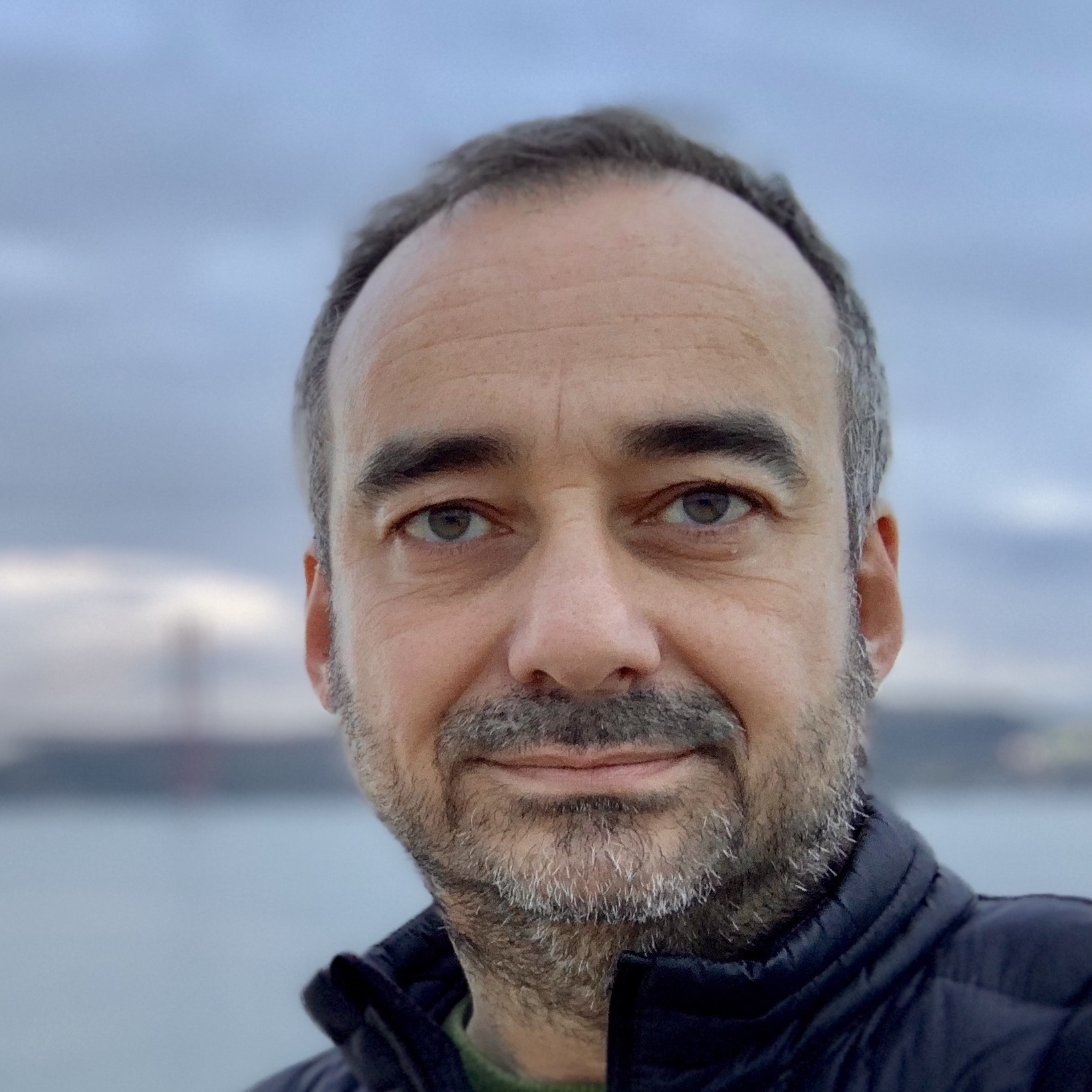Person
Ferreira, Miguel Godinho
|

|
Biography and Research Interest
I have expertise in telomere biology, cell cycle regulation and DNA repair both in fission yeast and zebrafish. My research focused on the molecular mechanisms of cell division and how damaged DNA (stemming DNA replication and telomeres) signals to block cell division in normal cells and how this process is deregulated in cancer cells. This work resulted in a series of studies in chromosome biology and DNA repair (Ferreira et al Mol Cell Biol 1999; Ferreira & Cooper Mol Cell, 2001; Ferreira & Cooper Genes & Dev, 2004). Since 2006, as an independent team leader, I focused on the molecular mechanisms underlying genome protection and their consequences (Carneiro et al Nature 2010; Reis et al EMBO J 2012; Avelar et al Nat Comm 2013; Hentges et al Cell Reports 2014; Escandell et al EMBO J 2019).
In 2012, I was awarded the Howard Hughes Medical Institute (HHMI) International Early Career Scientist award that allowed me to incorporate cancer research in my laboratory. Two scientific events impelled me to take this challenge using zebrafish as a model system: 1- the advent of zebrafish as a cancer model and our achievement in establishing zebrafish larvae as real-time Patient Derived Xenografts (PDX) for cancer therapy (Fior et al PNAS 2017; Costa et al EBioMedicine 2020; Almeida et al Commun Biol 2020) and 2- showing that zebrafish telomerase mutants anticipate spontaneous cancer to early age similar to further old age phenotypes (Henriques et al PLoS Genetics 2013; Carneiro et al PLoS Genetics 2016; El-Mai et al eLife 2020; Lex et al PNAS 2020).
In 2017, I joined the Institute for Research on Cancer and Aging of Nice (IRCAN), France. I was recruited as a scientist to the French state (CNRS) and achieved the position of Directeur de Recherche 2čme Classe (DR2). This step will endow me with a congenial community interested in understanding how ageing contributes for cancer.
My goal is to use the knowledge acquired on the molecular nature of telomere protection to understand the consequences of its failure at the organism level. My base hypothesis implies that telomere dysfunction signals a cascade of events that triggers cellular senescence and organism aging (described in Henriques & Ferreira Curr Opion in Cell Biology 2012 and Carneiro et al DMM 2016). I plan to test this idea by manipulating telomere dysfunction (in a time- and tissue-specific manner), using transgenic zebrafish. My vision is that enabling timely telomere protection in a few key tissues will enhance organism tissue regeneration and, as a consequence, reduce the frequency of age-associated diseases, namely, cancer.
In 2012, I was awarded the Howard Hughes Medical Institute (HHMI) International Early Career Scientist award that allowed me to incorporate cancer research in my laboratory. Two scientific events impelled me to take this challenge using zebrafish as a model system: 1- the advent of zebrafish as a cancer model and our achievement in establishing zebrafish larvae as real-time Patient Derived Xenografts (PDX) for cancer therapy (Fior et al PNAS 2017; Costa et al EBioMedicine 2020; Almeida et al Commun Biol 2020) and 2- showing that zebrafish telomerase mutants anticipate spontaneous cancer to early age similar to further old age phenotypes (Henriques et al PLoS Genetics 2013; Carneiro et al PLoS Genetics 2016; El-Mai et al eLife 2020; Lex et al PNAS 2020).
In 2017, I joined the Institute for Research on Cancer and Aging of Nice (IRCAN), France. I was recruited as a scientist to the French state (CNRS) and achieved the position of Directeur de Recherche 2čme Classe (DR2). This step will endow me with a congenial community interested in understanding how ageing contributes for cancer.
My goal is to use the knowledge acquired on the molecular nature of telomere protection to understand the consequences of its failure at the organism level. My base hypothesis implies that telomere dysfunction signals a cascade of events that triggers cellular senescence and organism aging (described in Henriques & Ferreira Curr Opion in Cell Biology 2012 and Carneiro et al DMM 2016). I plan to test this idea by manipulating telomere dysfunction (in a time- and tissue-specific manner), using transgenic zebrafish. My vision is that enabling timely telomere protection in a few key tissues will enhance organism tissue regeneration and, as a consequence, reduce the frequency of age-associated diseases, namely, cancer.
Non-Zebrafish Publications
2021 - Reichard M*, Giannetti K, Ferreira T, Maouche A, Vrtílek M, Pola?ik M, Bla?ek R and Ferreira MG*. Lifespan and telomere length variation across populations of wild-derived African killifish. Molecular Ecology. doi: 10.1111/mec.16287. PMID: 34826177.
2019 - Escandell JM, Mascarenhas Carvalho ES, Gallo-Fernandez M, Reis CC, Matmati S, Luís IM, Abreu IA, Coulon S, Ferreira MG. SSU72 phosphatase is a telomere replication terminator. The EMBO Journal. doi:10.15252/embj.2018100476.
2013 - Avelar AT, Perfeito L, Gordo I and Ferreira MG. Genome architecture is a selectable trait that can be maintained by antagonistic pleiotropy. Nature Communications 4:2235.
2013 - Almeida H and Ferreira MG. Spontaneous telomere to telomere fusions occur in unperturbed fission yeast cells. Nucleic Acids Research 41(5): 3056-67.
2010 - Carneiro T, Khair, L, Reis CC, Borges V, Moser B, Nakamura, TM and Ferreira MG (2010). Telomeres avoid chromosome-end detection by severing the checkpoint signal transduction pathway. Nature 467 (7312) :228-232
2009 - Trindade S, Sousa A, Xavier KB, Dionisio F, Ferreira MG and Gordo I (2009). Positive Epistasis Drives the Acquisition of Multidrug Resistance. PLoS Genetics 5(7)
2007 - Ferreira MG. Telomeres on the Cdk roller-coster ride. Nature Cell Biology 9 :22-23
